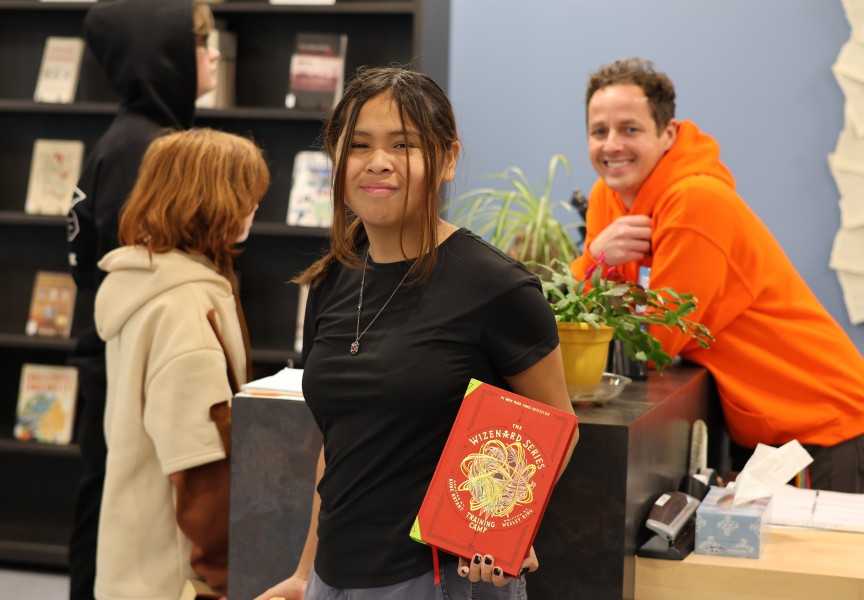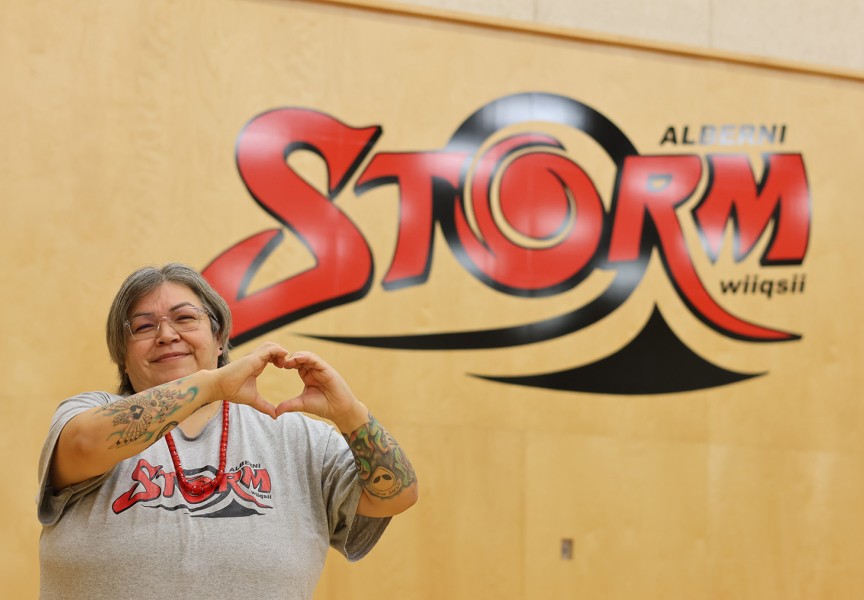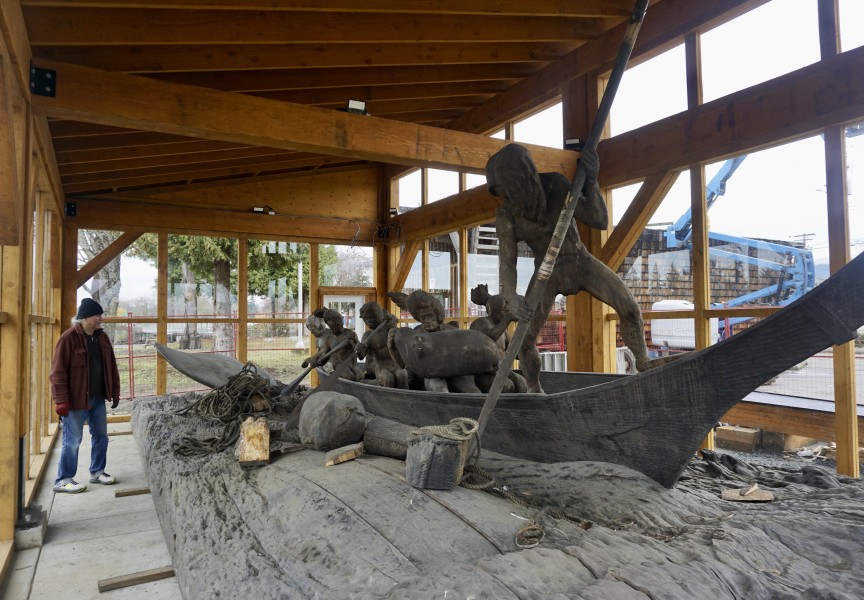Eleven Relatives of the natural world are emerging from an 800 year-old cedar tree, as head carver Tim Paul and his team of carvers and supporters work on the Indigenous Language Revitalization pole. Despite funding challenges, the project, led by Paul, is making significant progress; the pole’s completion is on track for mid to late October.
“The whole purpose of this pole is to say what we have left in the way of history and language,” said Paul in an interview at the carving site. “People should see that much more than anything else, this is who we are and what we need to save.”
“That’s what our people need to know,” he continued. “It’s a very good project, it’s a very good feeling.”
The pole encompasses all of nature, and in doing so portrays a Nuu-chah-nulth worldview.
“From the Sky, Earth, the Moon and the Sun,” said Paul, describing the pole, “Come down to the Mountaintops, the Mountain Chief, the Lakes and the Rivers, the two Dwarfs of the Earthquake, right in the middle there...Those guys are there to remind us that in the whole of the universe, you and I are the very smallest...We’re like little pets, little birds, to what people refer to as Mother Nature.”
“This is a symbol of language revitalization in this country and around the world,” emphasized First Nations Education Foundation (FNEF) Executive Director Scott Jeary, in a phone interview. “It celebrates the wonderful work that is ongoing...The residential schools’ sole purpose was to strip the language and culture from [First Nations peoples]. It’s just so powerful, the strength and resilience that’s being demonstrated there.”
The pole sends a message from our past to our future, explained carver Cecil Dawson, in an interview on site. The same message that was discouraged in the residential schools is now being celebrated here.
Volunteers Nigel Atkin and Scott Valentine are passionate about the importance of the project.
“We’re so disconnected in so many ways, socially, culturally, from the environment,” reflected Valentine, on site. “All those things are out of balance. But when I come here, and Cecil says ‘Yeah come in, grab a brush, paint’—that’s indicative of the welcoming, the hospitality, the generosity, that has been the story of Indigenous people since the beginning. Same as Tim, sharing his knowledge, allowing us to ask questions, as he’s pulling these stories out of this beautiful old cedar. These languages are so important, and these stories are what we need if we hope to survive.”
“I’m learning so much,” agreed Atkin. “I’m enjoying the opportunity of being with a master carver, and Cecil Dawson as an artist. It’s a great gift in my life to have access. To have an opportunity to use the knives, and use my own tools on this. It doesn’t get better, for me. I’m very lucky to have this opportunity.”
Tim Paul was quick to highlight the contributions of others not present during the interview.
“Cecil Dawson, Harry Lucas, Rennie Dickinson, Stan Lucas, Jeff Cook, Gerald Robinson are real go-getters in making sure we steamroll ahead,” he stated. “Those are the individuals that I would like to make mention of, that are doing the real work.”
He also mentioned contributions by Leroy Littlebear and his wife Rose; Dale Devost; and Scott Jeary.
Jeary spoke to the financial challenges the project continues to face. The pole’s completion is certain, but raising the funds to finish the engineering work needed to raise and place it at the end of November is a difficult target. 2019 is the United Nations Year of Indigenous Languages.
“[It needs] to be within the Year of Indigenous Languages,” stated Jeary, “Which is really important to us and to everybody. We’re working awfully hard on it, but there are dollars that need to be spent on the structural engineering work, and the location where it’s going to go. It hasn’t been done, and it’s expensive.”
With just over three months left in 2019, fundraising efforts continue.
“We’re pushing like crazy to figure out some way or another that we can get that money organized,” said Jeary.
Anyone wishing to contribute to the Language Revitalization Pole project can do so through the donation link on the FNEF website at https://fnef.ca/donate/. FNEF is a registered non-profit with CRA Charitable Status and can issue tax receipts for those who would like to receive one.
“We’re gonna get it done,” stated Dawson. “Where’s it gonna go we don’t know. It’s out of our hands. We’re gonna finish it. We’re planting our flag in our own land and saying we’re still here. We’ve got our values. We’re not gone.”







